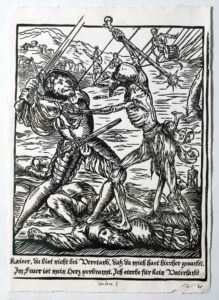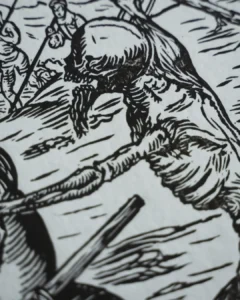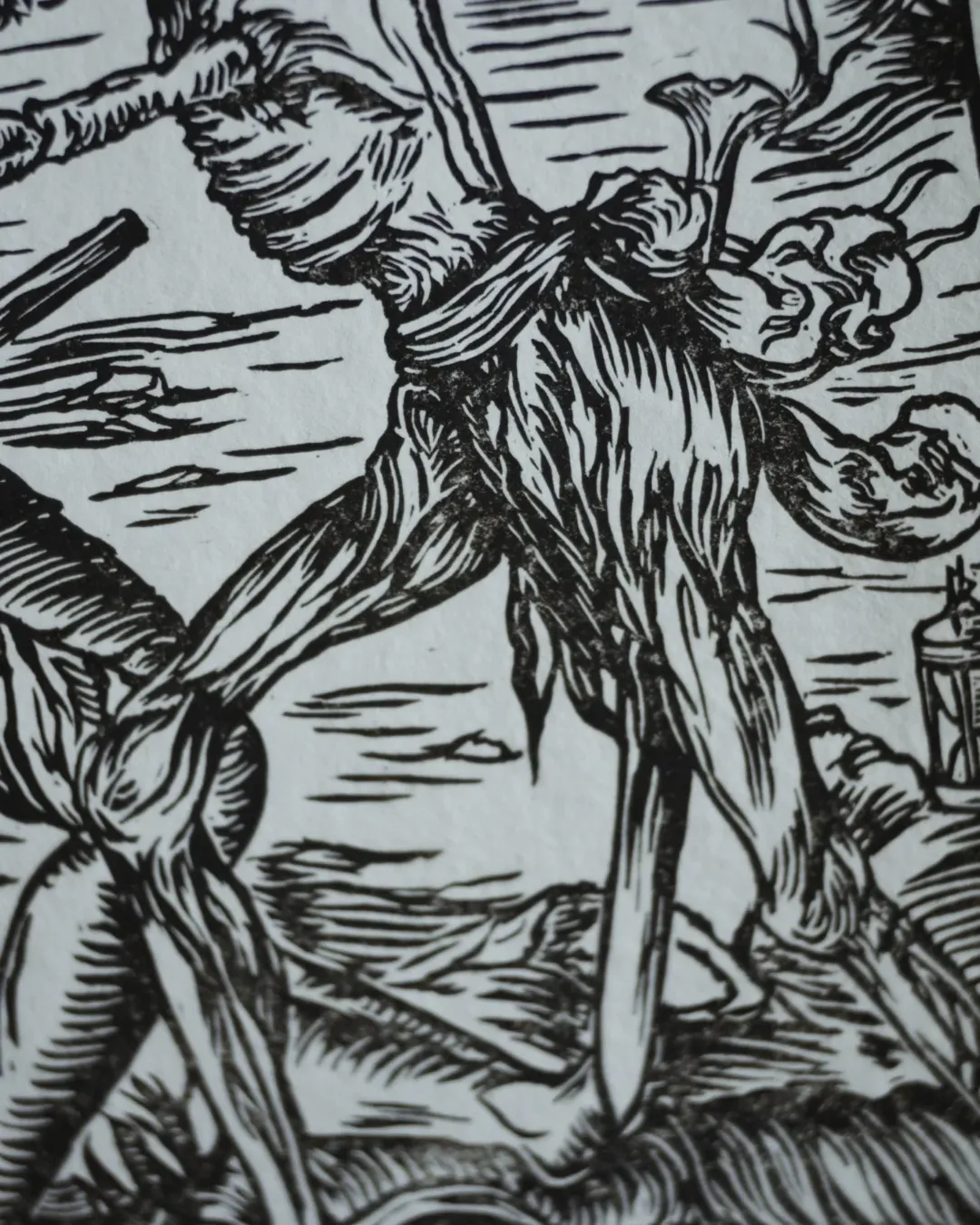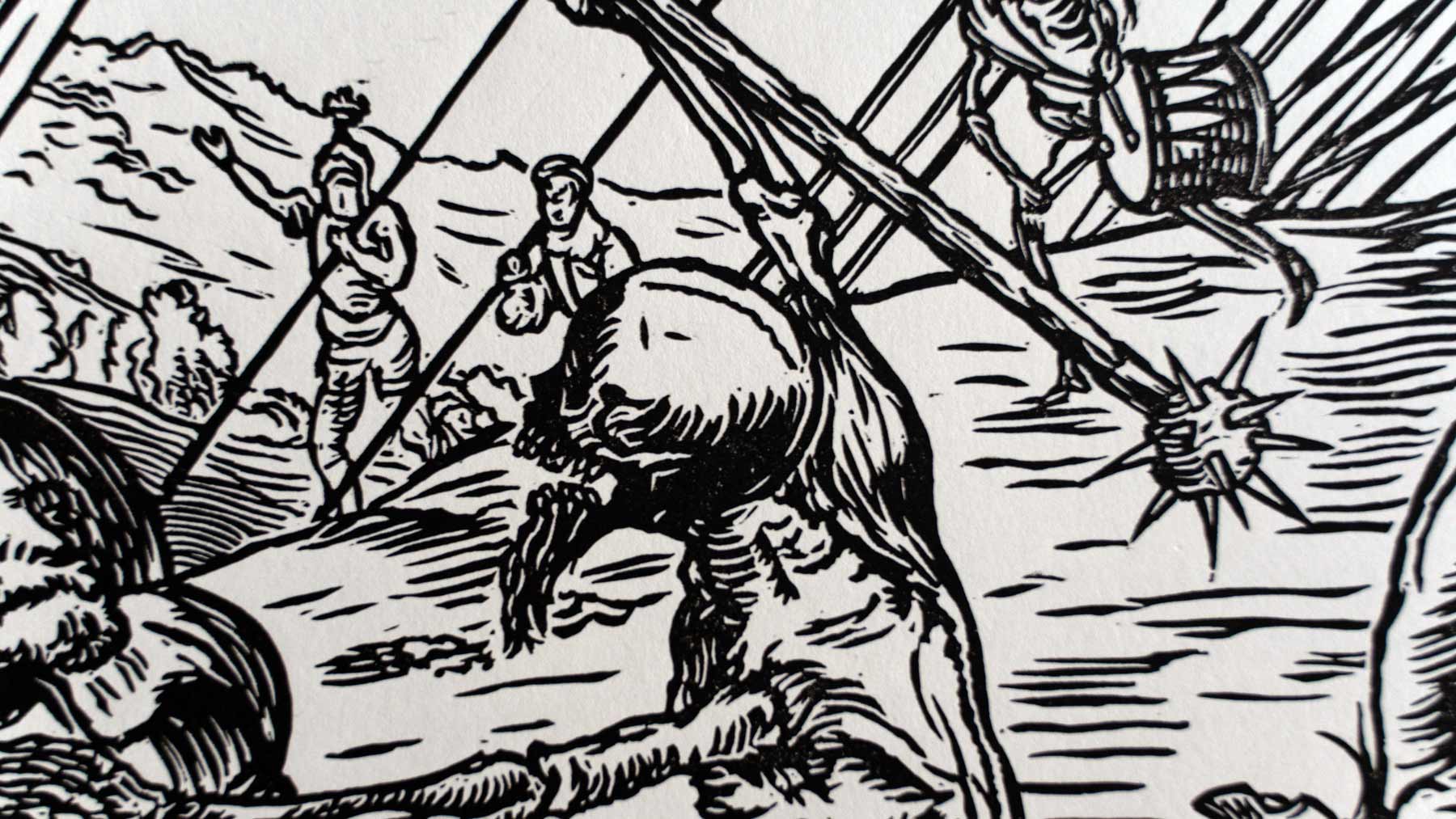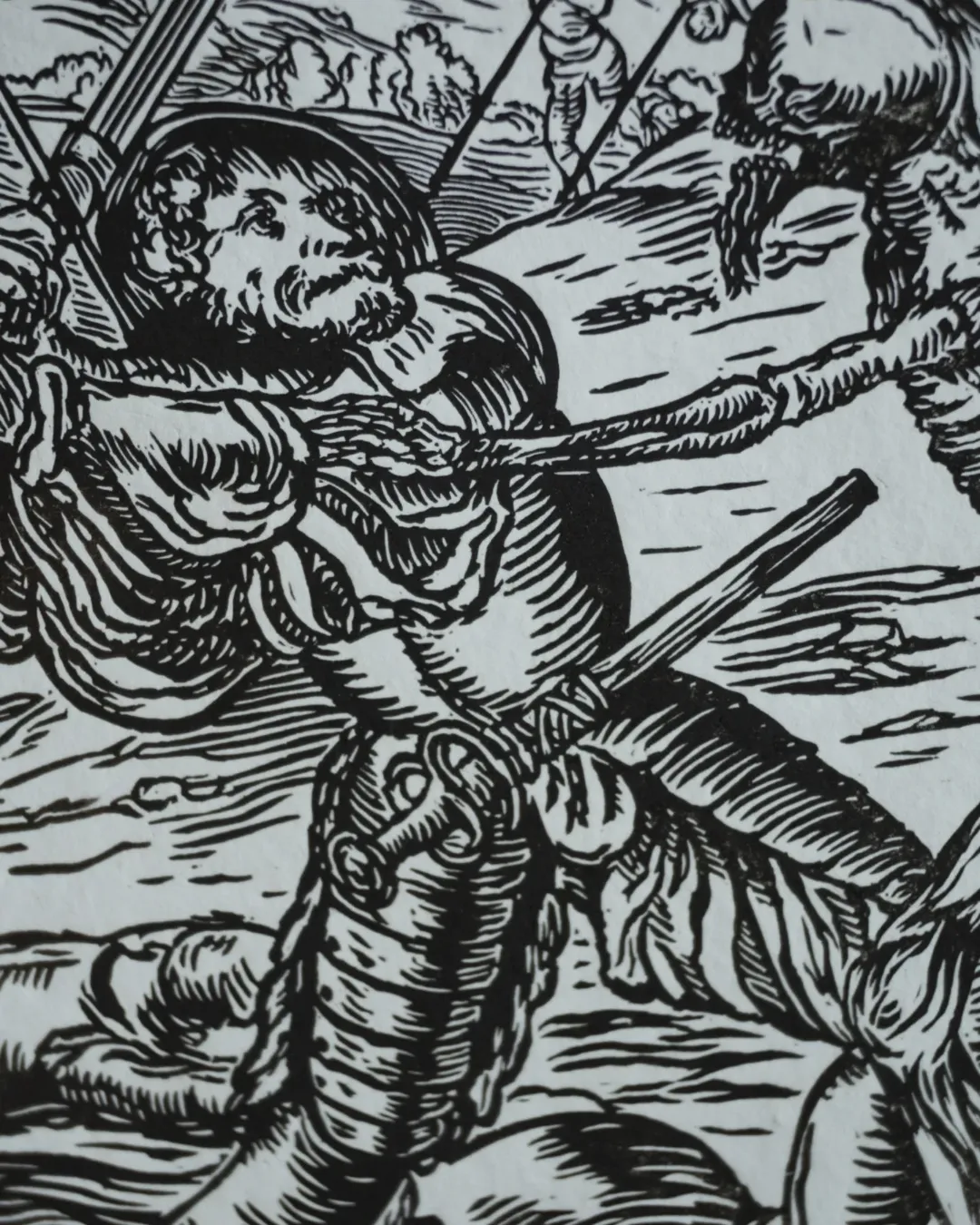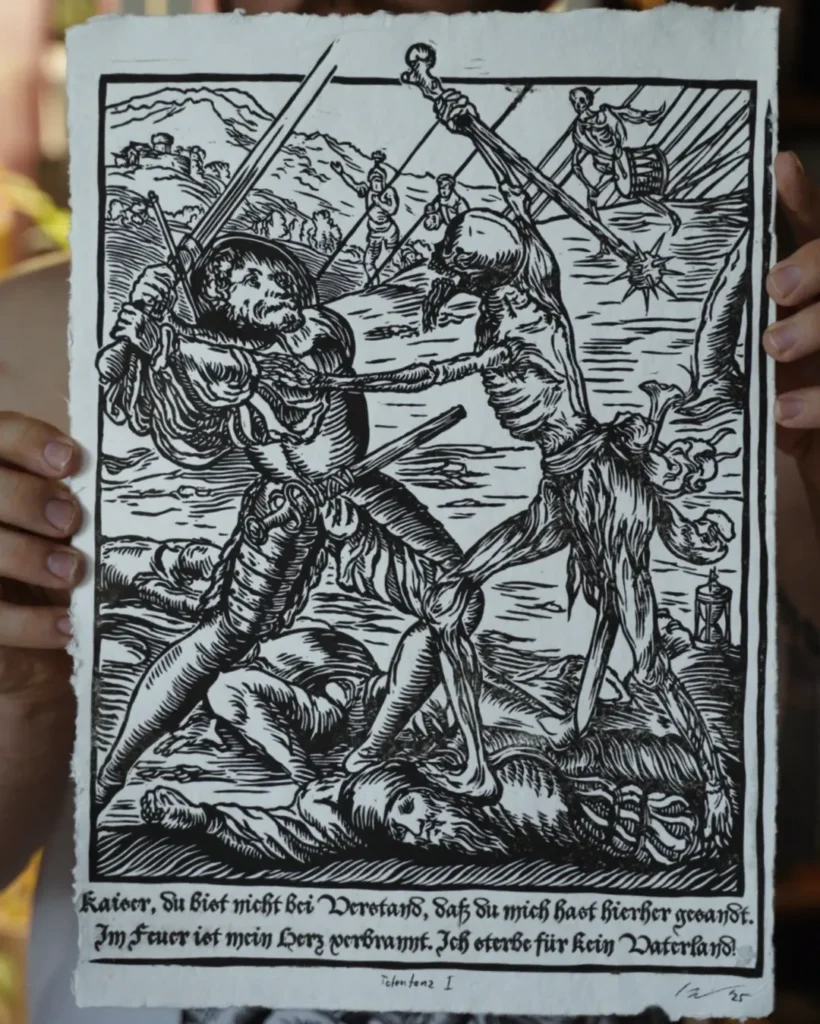
A few details:
- Linocut print
- Size: DIN A3
- June 2025
“Dance of Death I – Emperor“
Kaiser, du bist nicht bei Verstand, daß du mich hier her gesandt. Im Feuer ist mein Herz verbrannt. Ich sterbe für kein Vaterland!
“Dance of Death I – Beloved“
Nicht gekommen ist der Geliebte, nie wird er kommen, nie seine Hände reichen. Am Tage seiner Ankunft wird alles blühen wie noch nie, die Sanftmut wird der Trauer weichen…
With “Totentanz I” (Dance of Death I), IRRLÆUFER takes up an ancient motif that has served as a symbol of the equality of all people in the face of death since the late Middle Ages. In powerful lines and the clear black-and-white contrast of linocut, the dance between life and transience becomes a dramatic duel: An armored warrior wrestles with personified death, whose skeletal body appears grotesquely alive. In the background, distant figures pass by against a radiant horizon—witnesses to an endless cycle of struggle, sacrifice, and rebirth.
The two textual variants of the work direct the interpretation in different, yet related directions. In the “Emperor” version, the focus is on power, hubris, and the loss of meaning. The emperor, a symbol of human rule, recognizes the futility of his actions at the last moment. His heart is consumed by fire, his loyalty to his fatherland proves to be an illusion. IRRLÆUFER transforms the historical dance of death into an indictment of the ideological sacrifices of modernity – man does not die for God or glory, but in the idleness of power.
The “Beloved” version, on the other hand, speaks in quiet, melancholic tones. Here, death is understood not as an enemy, but as a lack of redemption. The beloved waits in vain, while the world remains in anticipation of a return that never comes. Her words are a lament for the impossibility of hope—and yet, within them, a longing for reconciliation shimmers, a longing that even death itself does not entirely reject.
Both versions revolve around the same void: humanity’s struggle with mortality and meaning. The battle in the painting is not only physical, but also spiritual—humanity struggles against its own realization that all striving is lost in the dust.
In “Dance of Death I” IRRLÆUFER reveals a peculiar beauty of decay: death as a mirror of life, pain as its final expression. The lines tremble, the figures writhe—yet in the moment of collision lies a profound stillness, an insight that exists beyond victory and defeat.
